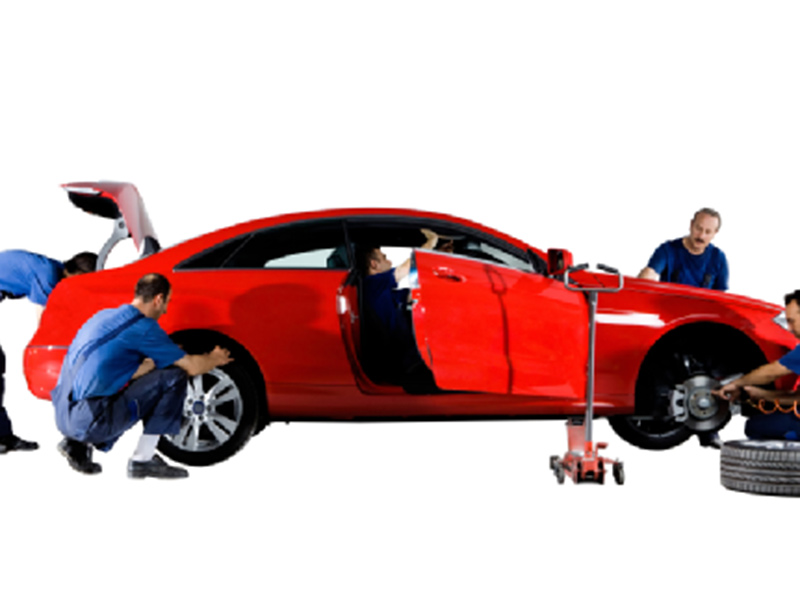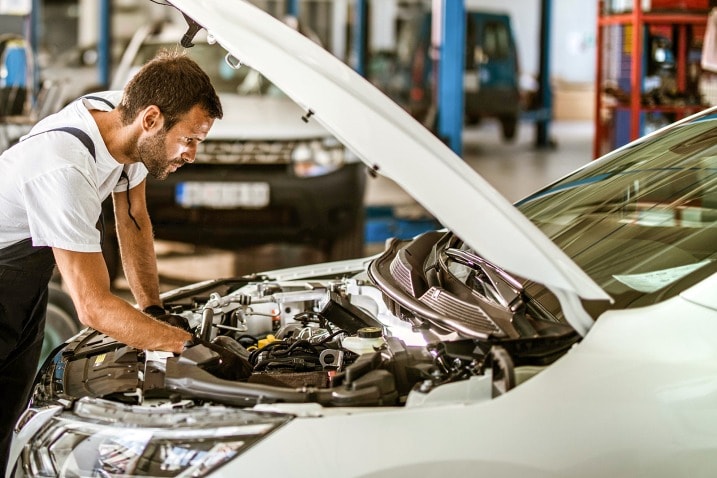All Categories
Featured
When it involves maintaining a car, understanding the distinctions between regular upkeep and repairs is essential for auto owners. Both facets are required for the longevity and dependability of your vehicle, but they offer distinctive purposes and are handled differently. By knowing when to carry out regular upkeep versus when to attend to repairs, you can keep your automobile running efficiently and avoid costly shocks.
![]()
Routine Maintenance: Prevention is Key. Regular maintenance includes the routine, preventive treatment that your cars and truck calls for to stay clear of future issues. It is typically arranged at specific intervals, such as every 3,000 or 5,000 miles, based on your car's handbook or producer recommendations. Regular upkeep aids ensure that your automobile remains in optimum condition, avoiding damage from causing major concerns down the line.
Some usual examples of routine maintenance consist of:
Oil Adjustments: Routine oil modifications are essential to keep your engine lubricated and running effectively. Oil helps reduce rubbing between engine components, stopping getting too hot and unnecessary wear. Tire Maintenance: This consists of tire rotations, harmonizing, and checking tire pressure. Appropriate tire maintenance makes certain far better gas efficiency, dealing with, and tire long life. Brake Inspections: Regular examine your brakes, consisting of pads and liquid levels, can capture any possible issues early, stopping brake failure and making sure safety and security. Liquid Checks and Top-Ups: Ensuring your vehicle has the best levels of coolant, transmission fluid, power steering fluid, and brake fluid is essential for overall automobile health and wellness. Air Filter Substitute: Changing the air filter makes certain that your engine obtains tidy air, which assists it run a lot more efficiently and minimizes engine strain. Regular upkeep is normally arranged and does not include repairing any kind of broken components-- it has to do with keeping whatever in great functioning order and protecting against future failures.
Fixes: Repairing the Unexpected. Fixings, on the other hand, are needed when something goes wrong with your automobile. Repair work resolve problems that affect the vehicle's performance or security and require to be repaired asap. Unlike maintenance, which is preventative, repair services generally take place when parts have actually broken, fell short, or malfunctioned.
Examples of usual repair services consist of:
Transmission Issues: If your cars and truck is having trouble changing equipments or experiences sliding, the transmission might need repair work or substitute. Engine Failing: If your engine begins misfiring, overheating, or delaying, it may need substantial repairs or replacement of parts like the timing belt, pistons, or seals. Brake Services: While brake pads become part of regular maintenance, if your brakes are making a grinding noise or are no more operating effectively, brake fixings will be needed, such as replacing the calipers or the blades. Battery Replacement: If your car will not begin or the battery is no more holding a fee, you'll require a substitute battery, which is a repair work. Suspension and Guiding Fixings: Issues with the suspension or guiding system-- such as difficulty steering or a bumpy ride-- can be indications that parts like struts or shock absorbers need repair. Fixings are usually more urgent and pricey than routine maintenance. They are needed when something breaks or malfunctions, which can impact the vehicle's functionality and safety and security.
Trick Differences In Between Routine Repair And Maintenance. Timing: Regular maintenance is precautionary and carried out at arranged periods, while repair services are reactive and occur when something goes wrong. Expense: Maintenance is typically less costly, as it includes monitoring and replacing smaller sized parts or fluids. Repair services, specifically major ones, have a tendency to be extra expensive as a result of the intricacy of taking care of malfunctioning or broken components. Function: The goal of maintenance is to keep your vehicle running well and protect against problems. Repairs, on the various other hand, are required to repair problems that have actually already taken place. Frequency: Routine upkeep happens continually at set periods (e.g., every 5,000 miles), while fixings are much less foreseeable, frequently occurring when components wear or stop working out all of a sudden. Why Both are very important. Both regular repair and maintenance are essential for the long-term health of your vehicle. Normal maintenance helps maintain your vehicle running efficiently and can prevent lots of usual issues from developing in the first location. By remaining on top of set up solutions, you can resolve little issues before they become costly repair work.
![]()
However, repair services are sometimes inevitable. Despite the ideal upkeep, parts wear over time, and unpredicted concerns can arise. When repair work are required, resolving them without delay can protect against additional damage and guarantee your automobile's safety and security and reliability.
Final thought. In recap, understanding the difference in between regular repair and maintenance aids you take the best steps to care for your car. Routine maintenance can save you money by preventing bigger concerns, while repair services are necessary when something fails. By staying positive with upkeep and resolving repair services when required, you can extend the life expectancy of your car and ensure that it proceeds to do at its finest for several years to find.

Routine Maintenance: Prevention is Key. Regular maintenance includes the routine, preventive treatment that your cars and truck calls for to stay clear of future issues. It is typically arranged at specific intervals, such as every 3,000 or 5,000 miles, based on your car's handbook or producer recommendations. Regular upkeep aids ensure that your automobile remains in optimum condition, avoiding damage from causing major concerns down the line.
Some usual examples of routine maintenance consist of:
Oil Adjustments: Routine oil modifications are essential to keep your engine lubricated and running effectively. Oil helps reduce rubbing between engine components, stopping getting too hot and unnecessary wear. Tire Maintenance: This consists of tire rotations, harmonizing, and checking tire pressure. Appropriate tire maintenance makes certain far better gas efficiency, dealing with, and tire long life. Brake Inspections: Regular examine your brakes, consisting of pads and liquid levels, can capture any possible issues early, stopping brake failure and making sure safety and security. Liquid Checks and Top-Ups: Ensuring your vehicle has the best levels of coolant, transmission fluid, power steering fluid, and brake fluid is essential for overall automobile health and wellness. Air Filter Substitute: Changing the air filter makes certain that your engine obtains tidy air, which assists it run a lot more efficiently and minimizes engine strain. Regular upkeep is normally arranged and does not include repairing any kind of broken components-- it has to do with keeping whatever in great functioning order and protecting against future failures.
Fixes: Repairing the Unexpected. Fixings, on the other hand, are needed when something goes wrong with your automobile. Repair work resolve problems that affect the vehicle's performance or security and require to be repaired asap. Unlike maintenance, which is preventative, repair services generally take place when parts have actually broken, fell short, or malfunctioned.
Examples of usual repair services consist of:
Transmission Issues: If your cars and truck is having trouble changing equipments or experiences sliding, the transmission might need repair work or substitute. Engine Failing: If your engine begins misfiring, overheating, or delaying, it may need substantial repairs or replacement of parts like the timing belt, pistons, or seals. Brake Services: While brake pads become part of regular maintenance, if your brakes are making a grinding noise or are no more operating effectively, brake fixings will be needed, such as replacing the calipers or the blades. Battery Replacement: If your car will not begin or the battery is no more holding a fee, you'll require a substitute battery, which is a repair work. Suspension and Guiding Fixings: Issues with the suspension or guiding system-- such as difficulty steering or a bumpy ride-- can be indications that parts like struts or shock absorbers need repair. Fixings are usually more urgent and pricey than routine maintenance. They are needed when something breaks or malfunctions, which can impact the vehicle's functionality and safety and security.
Trick Differences In Between Routine Repair And Maintenance. Timing: Regular maintenance is precautionary and carried out at arranged periods, while repair services are reactive and occur when something goes wrong. Expense: Maintenance is typically less costly, as it includes monitoring and replacing smaller sized parts or fluids. Repair services, specifically major ones, have a tendency to be extra expensive as a result of the intricacy of taking care of malfunctioning or broken components. Function: The goal of maintenance is to keep your vehicle running well and protect against problems. Repairs, on the various other hand, are required to repair problems that have actually already taken place. Frequency: Routine upkeep happens continually at set periods (e.g., every 5,000 miles), while fixings are much less foreseeable, frequently occurring when components wear or stop working out all of a sudden. Why Both are very important. Both regular repair and maintenance are essential for the long-term health of your vehicle. Normal maintenance helps maintain your vehicle running efficiently and can prevent lots of usual issues from developing in the first location. By remaining on top of set up solutions, you can resolve little issues before they become costly repair work.

However, repair services are sometimes inevitable. Despite the ideal upkeep, parts wear over time, and unpredicted concerns can arise. When repair work are required, resolving them without delay can protect against additional damage and guarantee your automobile's safety and security and reliability.
Final thought. In recap, understanding the difference in between regular repair and maintenance aids you take the best steps to care for your car. Routine maintenance can save you money by preventing bigger concerns, while repair services are necessary when something fails. By staying positive with upkeep and resolving repair services when required, you can extend the life expectancy of your car and ensure that it proceeds to do at its finest for several years to find.
Latest Posts
Boost Your Brand Name with Full Circle Strategic Marketing's Advertising Proficiency
Published May 15, 25
1 min read
Advertising And Marketing that Links People to Care
Published May 15, 25
1 min read
Comprehending Roof Service Warranties: What Homeowners Must Know
Published May 14, 25
1 min read
More
Latest Posts
Boost Your Brand Name with Full Circle Strategic Marketing's Advertising Proficiency
Published May 15, 25
1 min read
Advertising And Marketing that Links People to Care
Published May 15, 25
1 min read
Comprehending Roof Service Warranties: What Homeowners Must Know
Published May 14, 25
1 min read